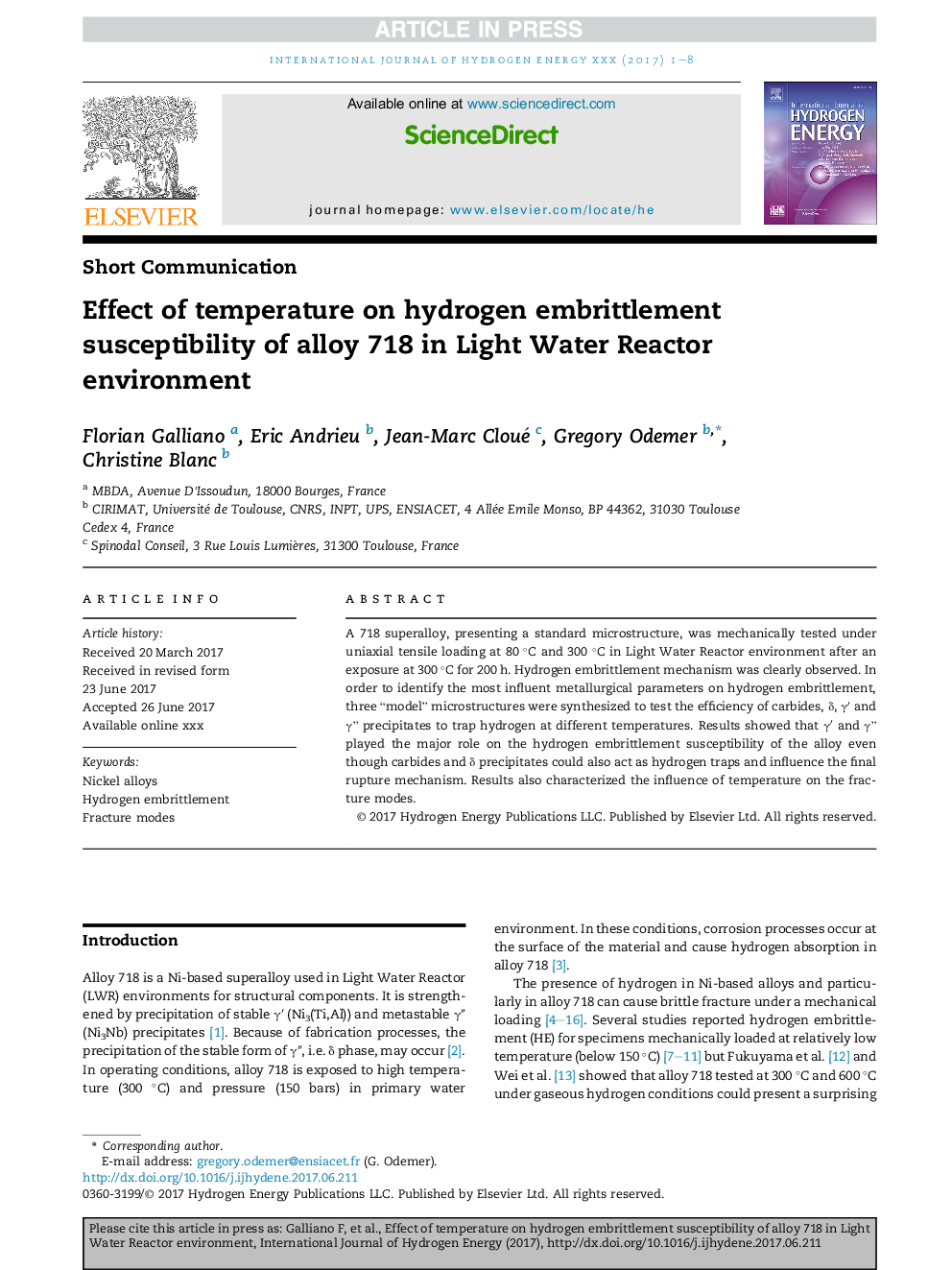| Article ID | Journal | Published Year | Pages | File Type |
|---|---|---|---|---|
| 5145991 | International Journal of Hydrogen Energy | 2017 | 8 Pages |
Abstract
A 718 superalloy, presenting a standard microstructure, was mechanically tested under uniaxial tensile loading at 80 °C and 300 °C in Light Water Reactor environment after an exposure at 300 °C for 200 h. Hydrogen embrittlement mechanism was clearly observed. In order to identify the most influent metallurgical parameters on hydrogen embrittlement, three “model” microstructures were synthesized to test the efficiency of carbides, δ, γⲠand γ” precipitates to trap hydrogen at different temperatures. Results showed that γⲠand γ” played the major role on the hydrogen embrittlement susceptibility of the alloy even though carbides and δ precipitates could also act as hydrogen traps and influence the final rupture mechanism. Results also characterized the influence of temperature on the fracture modes.
Related Topics
Physical Sciences and Engineering
Chemistry
Electrochemistry
Authors
Florian Galliano, Eric Andrieu, Jean-Marc Cloué, Gregory Odemer, Christine Blanc,
